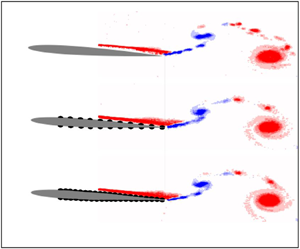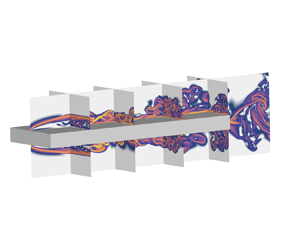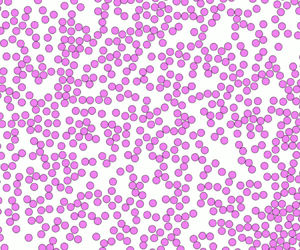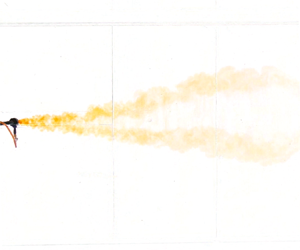Refine listing
Actions for selected content:
1416829 results in Open Access
New evidence on US monetary policy activism and the Taylor rule
-
- Journal:
- Macroeconomic Dynamics / Volume 28 / Issue 8 / December 2024
- Published online by Cambridge University Press:
- 29 February 2024, pp. 1809-1832
-
- Article
-
- You have access
- Open access
- HTML
- Export citation
Contact precautions as a barrier to hand hygiene: The Plan–Do–Study–Act (PDSA) framework to improve compliance with gloved hand hygiene
-
- Journal:
- Infection Control & Hospital Epidemiology / Volume 45 / Issue 6 / June 2024
- Published online by Cambridge University Press:
- 29 February 2024, pp. 788-789
- Print publication:
- June 2024
-
- Article
- Export citation
PROJECTIVE CHARACTER VALUES ON REAL AND RATIONAL ELEMENTS
- Part of
-
- Journal:
- Bulletin of the Australian Mathematical Society / Volume 110 / Issue 3 / December 2024
- Published online by Cambridge University Press:
- 29 February 2024, pp. 514-519
- Print publication:
- December 2024
-
- Article
-
- You have access
- Open access
- HTML
- Export citation
Effects of surface roughness on the propulsive performance of pitching foils
-
- Journal:
- Journal of Fluid Mechanics / Volume 982 / 10 March 2024
- Published online by Cambridge University Press:
- 29 February 2024, A1
-
- Article
-
- You have access
- Open access
- HTML
- Export citation
Invariant set generated by a nonreal number is everywhere dense
- Part of
-
- Journal:
- Proceedings of the Royal Society of Edinburgh. Section A: Mathematics , First View
- Published online by Cambridge University Press:
- 29 February 2024, pp. 1-21
-
- Article
-
- You have access
- Open access
- HTML
- Export citation
An advanced solid-state RF power source maximizing energy efficiency for optimal superconducting RF cavity charging
-
- Journal:
- International Journal of Microwave and Wireless Technologies / Volume 16 / Issue 10 / December 2024
- Published online by Cambridge University Press:
- 29 February 2024, pp. 1649-1658
-
- Article
-
- You have access
- Open access
- HTML
- Export citation
Leveraging uncertainty, market-power, and fiscal opacity: The growth of financial security states
-
- Journal:
- European Journal of Sociology / Archives Européennes de Sociologie / Volume 65 / Issue 2 / August 2024
- Published online by Cambridge University Press:
- 29 February 2024, pp. 248-280
-
- Article
-
- You have access
- Open access
- HTML
- Export citation
Vortex dynamics and boundary layer transition in flow around a rectangular cylinder with different aspect ratios at medium Reynolds number
-
- Journal:
- Journal of Fluid Mechanics / Volume 982 / 10 March 2024
- Published online by Cambridge University Press:
- 29 February 2024, A5
-
- Article
- Export citation
American Hegelianism and its Impact Upon Indian Boarding School Policy
-
- Journal:
- Hegel Bulletin / Volume 45 / Issue 1 / April 2024
- Published online by Cambridge University Press:
- 29 February 2024, pp. 65-92
- Print publication:
- April 2024
-
- Article
-
- You have access
- Open access
- HTML
- Export citation
Crystal structure of indacaterol hydrogen maleate (C24H29N2O3)(HC4H2O4)
-
- Journal:
- Powder Diffraction / Volume 39 / Issue 2 / June 2024
- Published online by Cambridge University Press:
- 29 February 2024, pp. 76-81
-
- Article
-
- You have access
- Open access
- HTML
- Export citation
Retrospective Analysis of Circumstances of Falls and Related Injuries across Levels of Care in Older Adult Retirement Home Facilities
-
- Journal:
- Canadian Journal on Aging / La Revue canadienne du vieillissement / Volume 43 / Issue 3 / September 2024
- Published online by Cambridge University Press:
- 29 February 2024, pp. 454-460
-
- Article
-
- You have access
- Open access
- HTML
- Export citation
Water and History in Southern Africa
- Part of
-
- Journal:
- The Journal of African History / Volume 65 / Issue 1 / March 2024
- Published online by Cambridge University Press:
- 29 February 2024, pp. 22-29
-
- Article
-
- You have access
- Open access
- HTML
- Export citation
Elizabeth A. Foster. African Catholic: Decolonization and the Transformation of the Church. Boston: Harvard University Press, 2019. 369 pp. Photos. Maps. Tables. Bibliography. Index. $49.00. Cloth. ISBN: 9780674987661.
-
- Journal:
- African Studies Review / Volume 67 / Issue 2 / June 2024
- Published online by Cambridge University Press:
- 29 February 2024, pp. 477-479
-
- Article
-
- You have access
- HTML
- Export citation
Investigation of near-wall particle statistics in CFD-DEM simulations of dense fluidised beds and derivation of an Eulerian particle dynamic wall boundary condition
-
- Journal:
- Journal of Fluid Mechanics / Volume 982 / 10 March 2024
- Published online by Cambridge University Press:
- 29 February 2024, A2
-
- Article
- Export citation
A NOTE ON PROJECTIONS IN ÉTALE GROUPOID ALGEBRAS AND DIAGONAL-PRESERVING HOMOMORPHISMS
- Part of
-
- Journal:
- Bulletin of the Australian Mathematical Society / Volume 110 / Issue 3 / December 2024
- Published online by Cambridge University Press:
- 29 February 2024, pp. 508-513
- Print publication:
- December 2024
-
- Article
- Export citation
Growing trends in conceptualizing geriatric mental health within a neural context: Commentary on “Anxiety in Late-Life Depression: Associations with Brain Volume, Amyloid Beta, White Matter Lesions, Cognition, and Functional Ability” by Kryza-Lacombe et al.
-
- Journal:
- International Psychogeriatrics / Volume 36 / Issue 11 / November 2024
- Published online by Cambridge University Press:
- 29 February 2024, pp. 991-994
-
- Article
- Export citation
The dynamics of impinging plumes from a moving source
-
- Journal:
- Journal of Fluid Mechanics / Volume 982 / 10 March 2024
- Published online by Cambridge University Press:
- 29 February 2024, A6
-
- Article
-
- You have access
- Open access
- HTML
- Export citation
Hausdorff operators on some classical spaces of analytic functions
- Part of
-
- Journal:
- Canadian Mathematical Bulletin / Volume 67 / Issue 3 / September 2024
- Published online by Cambridge University Press:
- 29 February 2024, pp. 768-780
- Print publication:
- September 2024
-
- Article
- Export citation
Unionization, industry concentration, and economic growth
-
- Journal:
- Macroeconomic Dynamics / Volume 29 / 2025
- Published online by Cambridge University Press:
- 29 February 2024, e3
-
- Article
- Export citation
Judge Ideology and Opportunistic Insider Trading
-
- Journal:
- Journal of Financial and Quantitative Analysis / Volume 60 / Issue 4 / June 2025
- Published online by Cambridge University Press:
- 29 February 2024, pp. 1656-1685
- Print publication:
- June 2025
-
- Article
-
- You have access
- Open access
- Export citation























































































